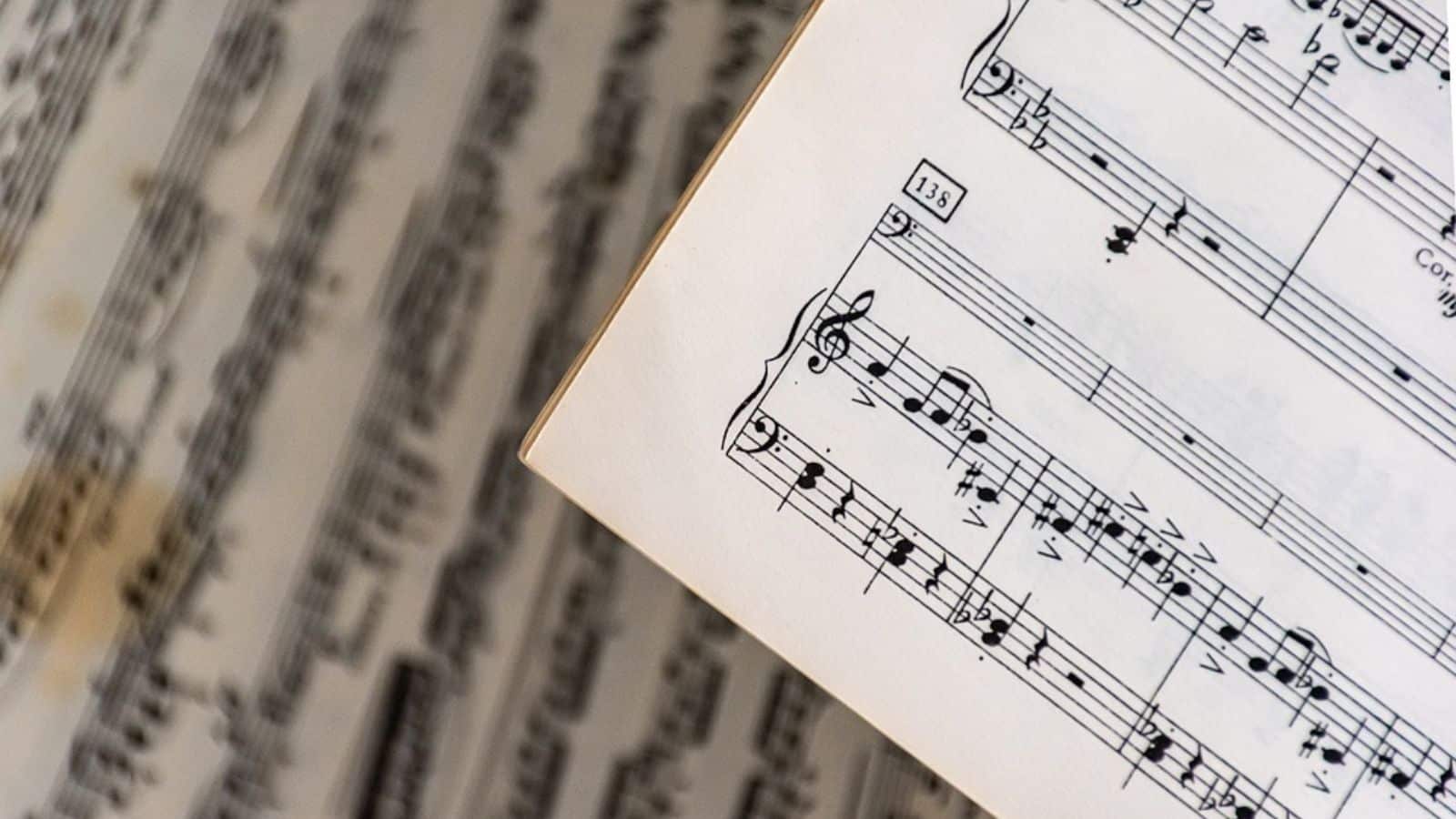
Before exploring the finer aspects of tonality and atonality, I am going to examine what these terms mean in music.
Without delving too far into the history of music, tonality is broadly recognised as a system for organising music based on a given key or tonic note.
An example of this would be Beethoven‘s First Piano Concerto that he composed in the key of C major. That is its tonality.
Tonality also includes the concept of musical keys and key signatures that emerged from a system of modes popular for hundreds of years before. Within these keys are both major and minor keys making up a total of 24 possible keys: twelve major keys and twelve minor keys.
On the other side of the title is atonality. This is a relatively new concept in the world of music with the creator of the system often credited to be the German composer Arnold Schoenberg.
If you are composing atonally you have abandoned nearly all the harmonic principles of the tonal system. There are no keys, key signatures, tonic or dominant harmonic relationships.
In a nutshell what Schoenberg proposed was an organisation of pitch based on tone rows and the equal importance of every degree of the chromatic scale.
In this simple manner Schoenberg by the early part of the 20th Century, unravelled hundreds of years of tonal harmony and opened the doors to a whole new universe of harmonic and melodic possibilities.
Perhaps the way I have presented these terms is a little divisive. It suggests that tonality and atonality are separate musical concepts that will never see eye to eye.
Tonality vs Atonality
Composers did not simply swap one system or organisation straight to the other. Instead, like so many changes in the Arts, composers filtered the new approach to match their aspirations and tastes.
Arnold Schoenberg with his revolutionary approach to harmony composition began the Second Viennese School as it came to be known.
Apart from Schoenberg himself, the two key composers active under this creative umbrella were Anton von Webern and Alban Berg. Schoenberg came from a strong Romantic tradition of composers and his early compositions reflect this.
Webern was an ardent follower of Schoenberg’s methods and his compositions, often beautifully crystalline, are faithful to Schoenberg’s principles throughout. Berg in contrast never fully relinquished his Romantic side.
His music whilst fully employing the serial techniques, remains with its feet in the works of Mahler, Bruckner and even Brahms.
My point here is that even though some composers religiously adhered to Schoenberg’s methods and indeed developed them considerably further, many created a successful blend of two worlds; the Romantic and the atonal.
Parallels exist across the twentieth and twenty-first century musical sphere with some composers staunchly adhering to the tonal world whilst others balance and blend tonality with atonality or develop their unique set of harmonic principles.
The immensely popular music of the Minimalists exists within a tonal framework whereas the music of Elliot Carter draws heavily on serial ideas and concepts.
Composer John Adams uses a musical canvas that whilst not serial in Schoenberg’s understanding, does not confine itself to tonality alone, but exhibits a richer, expansive and altogether more captivating cosmos.
These illustrations are taken from the genre we conveniently describe as classical music, all be it contemporary classical in the case of Adams and Carter.
Where tonality thrives is in popular music culture and Musical Theatre. The idea of music that is composed or conceived within a framework of keys encapsulates pop music.
I cannot think of a single song that does not subscribe to the tonal ideas. That is not to say that innovation within the pop culture is dormant, far from it, just that atonality is not a feature of this type of music.
With the possible exception of that master of music for the stage, Stephen Sondheim, Musical Theatre also falls under the auspices of tonality.
Sondheim’s approach to composition, for me, sets him apart from many others working in that genre of music. His exceptional inventiveness never leaves tonality to succumb to the predictable of the banal.
Again, it is not that Musical Theatre is dull or lame tonally speaking, just that Sondheim stands out as a particularly brilliant writer.
Where tonality and atonality meet more obviously is in the world of film.
If you listen to the amazing score Jerry Goldsmith composed for the original film ‘Plant Of The Apes’ (1968) for instance, you will quickly be aware of dissonance and elements of the score that are not tonal.
Goldsmith openly admitted to employing serial techniques in this film, the effect of which was to conjure a truly alien landscape that magnificently enhanced the film.
Many other movie scores besides this early example have seen composers dabble with serialism, some with more success than others.
One of the challenges to anyone listening to atonal music is the sense of being cast adrift from key aspects of that we have probably grown up listening to and performing.
The feeling of being without a tonal centre even if it is a complex one tends to make people uncomfortable.
All the expectations of a listener faced with an atonal score become eroded and it can require considerable concentration and resilience to stay the course.
One reason for this is that some atonal music can sound very dissonant. It may not have the phrases and resolutions that provide landmarks in a tonal score. Melodies can be angular, divided and difficult to follow.
The score could be highly polyphonic and texturally dense making following the piece hard. In contrast to that, a pop song runs around three minutes, has a simple structure, accessible harmony, a memorable melody and is often rhythmically repetitive.
To travel the distance from say The Rolling Stones to Anton von Webern takes more than a leap of faith. In the realms of film, atonality seems to be more acceptable as it is served up to us with visuals that offer markers, cues and structure.
Both tonal and atonal music have their place in the 21st Century with neither one a clear winner just the preference and taste of each listener.


